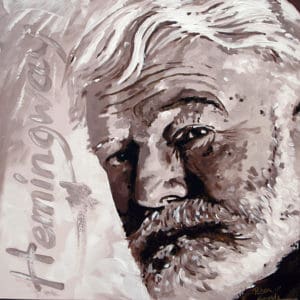Just weeks before the world lost one of its most beloved tenors, a unique moment in the art world unfolded in the serene landscapes of Umbria, Italy. Renowned Belgian portrait artist Peter Engels embarked on a mission to capture the essence of Luciano Pavarotti in what would become the final portrait of the legendary opera singer.
The Story Behind the Portrait
Peter Engels, known for his distinctive use of the palette knife, was determined to create a portrait of Pavarotti. However, despite reaching out to Pavarotti’s entourage, he received no response. Unfazed, Engels traveled to Umbria, near the town of Todi, where he immersed himself in the picturesque surroundings of sunflower fields and olive groves. There, using photographs of Pavarotti, Engels began to paint a large portrait (100×100 cm), entirely crafted with his signature palette knife technique.

A Dramatic Turn of Events
The significance of this portrait became painfully clear when, just a short time later, Luciano Pavarotti passed away on September 6, 2007. The world mourned the loss of the opera legend, and Engels’ work took on a new, poignant meaning. Newspapers quickly picked up the story, highlighting the dramatic timing of Engels’ creation. Headlines declared: “Belgian Artist Peter Engels Paints the Last Portrait of Luciano Pavarotti.”
The portrait, filled with the energy and passion that Pavarotti himself exuded on stage, stands as a testament to the artist’s ability to capture not just the physical likeness but the spirit of his subjects.

A Place in Art History
Today, this significant piece of art resides in a private collection in the South of France, alongside two other works by Peter Engels. The collection also includes a portrait of the legendary American writer Ernest Hemingway and a group portrait of “The Three Tenors” – José Carreras, Plácido Domingo, and Luciano Pavarotti. This last piece was commissioned by a French art collector, further cementing Engels’ reputation as a master portraitist.


The Legacy of Peter Engels
Peter Engels’ portraits are characterized by their textural richness and emotional depth, achieved through his adept use of the palette knife. His work often captures iconic figures, freezing them in time with a sense of immediacy and vitality that few artists can match.
The story of the Pavarotti portrait is not just about art; it is about the intersection of life and death, fame and legacy, and the power of art to capture the fleeting essence of humanity. As the last portrait of Luciano Pavarotti, Engels’ work holds a special place in both the art world and the hearts of opera fans globally.
In capturing Pavarotti’s likeness, Peter Engels created more than just a portrait – he crafted a timeless tribute to a man whose voice will echo through the ages.
